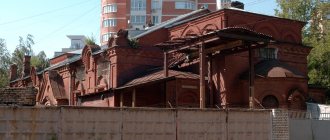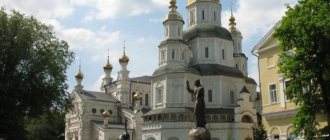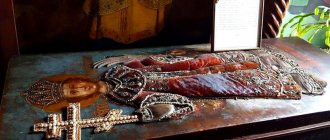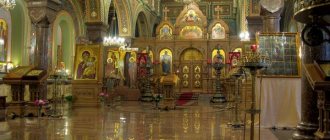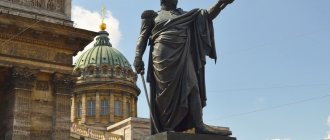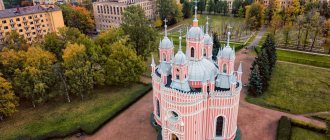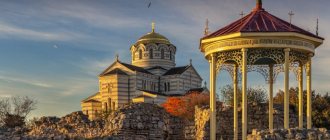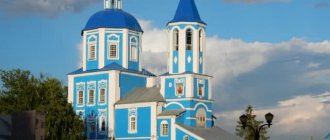Mir
Russia Moscow region Rozhdestveno village Church of the Nativity of Christ (Rozhdestveno) Map is loading…
{"format":"leaflet","minzoom":false,"maxzoom":false,"limit":50,"offset":0,"link":"all","sort":[""], "order":[],"headers":"show","mainlabel":"","intro":"","outro":"","searchlabel":"\u2026 \u0441\u043b\u0435\ u0434\u0443\u044e\u0449\u0438\u0435 \u0440\u0435\u0437\u0443\u043b\u044c\u0442\u0430\u0442\u044b","default":"","import-annotation":false,"width ":"auto","height":"350px","centre":{"text":"","title":"""link":"""lat":55.85485700000000264253685600124299526214599609375,"lon": 37.04858399999999818419382791034877300262451171875,"icon":""},"title":"","label":"","icon":"","lines":[],"polygons":[],"circles":[ ],"rectangles":[],"copycoords":false,"static":false,"zoom":8,"defzoom":14,"layers":["OpenStreetMap"],"image layers":[] ,"overlays":[],"resizable":false,"fullscreen":true,"scrollwheelzoom":true,"cluster":false,"clustermaxzoom":9,"clusterzoomonclick":true,"clustermaxradius":80, "clusterspiderfy":true,"geojson":"","clicktarget":"","showtitle":true,"hidenamespace":false,"template":"","userparam":"","activeicon": "","pagelabel":false,"ajaxcoordproperty":"","ajaxquery":"","locations":[{"text":"\u003Cb\u003E\u003Ca href=\"/palomnik/%D0% A5%D1%80%D0%B8%D1%81%D1%82%D0%BE%D1%80%D0%BE%D0%B6%D0%B4%D0%B5%D1%81%D1%82% D0%B2%D0%B5%D0%BD%D1%81%D0%BA%D0%B8%D0%B9_%D1%85%D1%80%D0%B0%D0%BC_(%D0%A0%D0 %BE%D0%B6%D0%B4%D0%B5%D1%81%D1%82%D0%B2%D0%B5%D0%BD%D0%BE)\» title=\»\u0425\u0440\ u0438\u0441\u0442\u043e\u0440\u043e\u0436\u0434\u0435\u0441\u0442\u0432\u0435\u043d\u0441\u043a\u0438\u0439 \u0445\u0440\u04 30\u043c (\u0420\u043e\u0436 \u0434\u0435\u0441\u0442\u0432\u0435\u043d\u043e)\»\u003E\u0425\u0440\u0438\u0441\u0442\u043e\u0440\u043e\u0436\u0434\u0435 \u0441\u0442\u0432\ u0435\u043d\u0441\u043a\u0438\u0439 \u0445\u0440\u0430\u043c (\u0420\u043e\u0436\u0434\u0435\u0441\u0442\u0432\u0435\u043d\u0 43e)\u003C/a\u003E\ u003C/b\u003E\u003Chr /\u003E\u003Ca href=\"/palomnik/%D0%A1%D0%B2%D0%BE%D0%B9%D1%81%D1%82%D0%B2%D0% BE:%D0%90%D0%BD%D0%BD%D0%BE%D1%82%D0%B0%D1%86%D0%B8%D1%8F\» title=\»\u0421\u0432\u043e \u0439\u0441\u0442\u0432\u043e:\u0410\u043d\u043d\u043e\u0442\u0430\u0446\u0438\u044f\»\u003E\u0410\u043d\u043d\u043e\u0442 \u0430\u0446\u0438\ u044f\u003C/a\u003E: »'\u0425\u0440\u0438\u0441\u0442\u043e\u0440\u043e\u0436\u0434\u0435\u0441\u0442\u0432\u0435\u043d\u044 1\u043a\u0438\u0439 """ "" 441\u0442\u0438\u043b\u0435\ u043f\u043e\u0437\u0434\u043d\u0435\u0433\u043e \u043a\u043b\u0430\u0441\u0441\u0438\u0446\u0438\u0437\u043c\u0430 \u0441 \u 0447\u0435\u0440\u0442\u0430\ u043c\u0438 \u0448\u043a\u043e\u043b\u044b \u041a\u0430\u0437\u0430\u043a\u043e\u0432\u0430, \u0432\u043c\u0435\u0441\u0442\ u043e\u0441\u0442\u0430\u0440 \u0438\u043d\u043d\u043e\u0439 \u0434\u0435\u0440\u0435\u0432\u044f\u043d\u043d\u043e\u0439 \u0446\u0435\u0440\u043a\u0432\ u0438 XVII \u0432\u0435\u043a\ u0430.","title":"\u0425\u0440\u0438\u0441\u0442\u043e\u0440\u043e\u0436\u0434\u0435\u0441\u0442\u0432\u0435\u043d\u0441\u043a\u04 38\u0439\ u0445\u0440\u0430\u043c (\u0420\u043e\u0436\u0434\u0435\u0441\u0442\u0432\u0435\u043d\u043e)»»link»:»»»lat»:55.8548570000000026425 3685600124299526214599609375,"lon": 37.04858399999999818419382791034877300262451171875,"icon":""}],,"imageLayers":[]}
55.853036; 37.053269
Russia, Moscow region, Istra urban district, Rozhdestveno village
Rozhdestveno village, Moscow region
Russia
Telephone:
+7 (495) 994 76 82
Church of the Nativity
built in 1823 in the style of late classicism with features of the Kazakov school, instead of an ancient wooden church of the 17th century.
History[edit]
The first written mention of the village of Rozhdestveno dates back to 1433. The first information about the Nativity Church dates back to 1628; in the receipt book of the Patriarchal Treasury Order for this year it is written: “The Church of the Nativity in the sovereign’s palace village of Rozhestven.” In 1643, the village of Rozhdestveno was granted from the Order of the Great Palace to Prince Alexei Mikhailovich Lvov. In 1646, at the Church of the Nativity there was a priest, a sexton and a sexton. In 1678, this patrimony again became the sovereign's.
In 1810-1823 In the village, a new stone Church of the Nativity of Christ was built with chapels: the Nativity of St. John the Baptist and St. Apostles Peter and Paul, in the style of late classicism with features of the school of Matvey Kazakov.
In 1889, a parochial school was opened at the temple.
The Nativity Church was closed in 1938, the last rector of the temple, Sergei Belyaev, was arrested.
During the Great Patriotic War, Rozhdestveno found itself in the zone of heavy fighting that took place here in late November - early December 1941. Before entering the village, German planes bombed the village and one of the bombs fell from the southern side of the fence, creating a large crater. But the interior decoration remained intact. During the offensive, Soviet troops shelled the village of Rozhdestvena, aiming at the church, because The Germans installed machine guns on the roof of the church. After the war, fertilizers were stored in the church building.
In 1997, the revival of the Church of the Nativity of Christ began. The temple was handed over to the community; Currently, restoration work is being carried out under the leadership of architects M.Yu. Goryacheva, V.Ya. Kuznetsova, A.N. Mitrofanova.
In 1999, on the day of the Apostle Andrew the First-Called, a cross was erected over the dome of the temple. On September 9, 2001, parishioners of the temple reburied the remains of the first builders of the temple: Count Ivan Pavlovich and his wife Anna Petrovna Kutaisov, discovered in a collapsed crypt in the right aisle of the temple.
In 2011, it was 200 years since the beginning of the construction of the Church of the Nativity of Christ by Count Ivan Pavlovich Kutaisov. Gradually, with God's help, the temple regains its former beauty not only outside, but also inside. On Sundays and holidays, bells ring at the Divine Liturgy, priests and parishioners remember the names of Ivan and Anna Kutaisov, their son, the murdered Alexander, praying for the repose of their souls and for the salvation of their own.
History of the cathedral
The exact date of the foundation of the temple is still unknown, but it was founded by the will of Prince Oleg back in the 14th century. Initially, the temple was consecrated as the Assumption Church, in honor of the most revered holiday in Rus', the Dormition of the Mother of God. Only at the end of the 17th century, after the construction and consecration ceremony of the new Assumption Cathedral, it became the Nativity of Christ.
The cathedral served not only as a citywide temple, but also as a tomb for the Ryazan princes and their wives. However, in the 18th century, after the vault of the cathedral collapsed, the tombs were destroyed.
© Smol City
Timeline of reconstruction
Over the past centuries, the cathedral has been reconstructed and rebuilt many times in different traditions: most bishops tried to contribute to its appearance, to improve the appearance of the main temple of the Ryazan land. The modern architecture of the Church of the Nativity in the Ryazan Kremlin took shape only at the beginning of the 19th century, with the active participation of the famous architect L. I. Stephenhagen, who gave the building features of late classicism.
In 1826, the original stone five domes were replaced by a lighter wooden one, topped with a rotunda. Columns were placed at the entrances, a portico was built on the west, and the windows were made larger. However, the new look did not last long. Already in 1873, the dome was replaced with a new one - octagonal in the pseudo-Byzantine style, and the western portico was expanded. After some time, windows were added to the first tier. In the same year, the vaults of the cathedral were painted by the outstanding Ryazan icon painter Nikolai Shumov. Later he restored the iconostasis. Under Shumov, the Nativity Cathedral in Ryazan finally acquired its current image.
The last major renovation was carried out at the beginning of the twentieth century. Then a new floor was made from Metlakh tiles in the cathedral.
Church of the Nativity in Ryazan in Yandex panoramas (view from the apse)
XX century - our days
In 1930, the Soviet authorities closed the cathedral to parishioners, the building became secular: the city archive was located in its premises. Even with the collapse of the USSR, the temple was not given to the church for a long time, and it continued to be in the department of the Ryazan Museum of Local Lore.
The building came under the control of the Orthodox Church only in 2002, at which time it was consecrated by His Holiness Patriarch Alexy II. Since then, in the newly consecrated cathedral, services have resumed, a library has opened, and Sunday and singing schools have begun operating.
Currently, the Nativity Cathedral has cathedral status. Together with the Assumption Cathedral, it remains one of the two main churches of the Ryazan diocese.
Architecture[edit]
The single-domed building of the temple is designed in the style of mature classicism, reminiscent of the school of Matvey Kazakov. The quadrangle of the temple, decorated on three sides with four-column porticoes under high pediments in the south and north, is completed with a somewhat disproportionately small dome with four semi-circular windows and a small tower. The extremely unfavorable location of the dome suggests that the author’s plans were not realized: most likely, he also envisioned a drum, which, of course, would have given a different structure to the entire temple.
The facades of the temple were rusticated and divided by panels into which window openings were inscribed. Compared to the temple, the architecture of the adjacent bell tower, slender, with a cylindrical tier of bells and topped with a dome with a high spire, is more interesting. The pilasters with oversized capitals, almost childlike in design, attract attention in its outline.
Some inconsistency in the external forms of the temple was compensated for by the magnificent Empire iconostasis. The combination of ordinary white and gold was in perfect harmony with the dark inserts of the picturesque images. Of the church objects, perhaps, nothing deserved special attention, with the exception of the icon of Peter and Paul with a white enamel tablet with the inscription: “Blessed by Emperor Pavel Petrovich, Count Ivan Pavlovich and Countess Anna Petrovna Kutaisova, 1781 February 5th day.”
The Kutaisov spouses were subsequently buried in the right aisle of the temple. The tomb of Ivan Pavlovich was a tall oblong granite quadrangle on a pedestal, decorated on the transverse sides: on one side - a beautifully executed bronze coat of arms in an oval with the motto, on the other - a bas-relief head of Christ in a crown of thorns. The burial of Anna Petrovna was less solemn: the tomb itself was missing, the board with the inscription was at floor level. There was a marble tombstone with a cross attached to the wall.
Architecture
As a result of numerous reconstructions, the modern architectural appearance of the cathedral has combined elements of Baroque and Classicism. Moreover, it has a form that is widespread among Orthodox churches - the so-called ship (this is when all parts of the temple are lined up in one line). This form is considered the oldest in temple architecture and symbolizes the idea that the church, like a ship, saves believers from the destructive waves of worldly life and leads them to the Kingdom of God.
The temple has three tiers, decreasing in diameter from bottom to top. The upper tier is occupied by an octagonal rotunda with a pair of windows on each side. The rotunda is crowned with a dome and a dome with a cross. Above the portal there is an unusually shaped pediment, flanked by columns with the Corinthian order. The masonry of the plinth is white stone, which is typical for churches of the 15th century.
Among the rich decoration of the temple, it is worth noting the amazing carved iconostasis.
At the entrance to the Kremlin, the Archangel Cathedral is practically invisible: the view is blocked by the 19th century bell tower and the majestic building of the Assumption Cathedral.
© Nikolay Fedorov
Patronal holidays[edit]
Nativity
- Jan. 7
Side chapels:
- John the Baptist, prophet
- (March 8, June 7, July 7, September 11, October 6)
- Peter and Paul, chief apostles
- July 12
Vidnovsky deanery of the Podolsk diocese
Address: 142715, Moscow region, Leninsky district, village. Conversations Phone, +7 (916) 522-85-92 Website: https://www.besedihram.ru/ Email About the parish | Contacts | Side chapels | Worship services | Clergy | Directions | Details | Ascribed temples | Shrines | Story
ABOUT THE PARISH
There is a Sunday school at the church. Classes are held regularly on Sundays after the Divine Liturgy. The classes have a three-part form: part: The Law of God – 20-35 min. part: Church singing – 10-15 min. part: Handicrafts – 15-25 min. After lessons, the children drink tea. Parents can attend classes if they wish. The Law of God is taught using workbooks “Church Studies”, developed on the basis of the Sunday school “Vertograd” at the St. Michael the Archangel Church in Pushchino. At church singing, they study the basic prayers of everyday chants, voices, and spiritual songs. The parish leaflet “Parishioner” is published weekly. Every month, pilgrimage trips are organized from the temple, and the literary seminar “Speaker” is also held monthly at the parish. At the healing spring on the territory of the temple, a chapel and a bathhouse were built in the name of the prophet Elijah of God.
AISLES
prophet Elijah (August 2) Protection of the Mother of God (October 14) Icon of the Mother of God “Joy of All Who Sorrow” (August 5, November 6)
WORSHIP SERVICES
On Saturdays, Sundays and holidays:
- 8:00 Confession
- 8:40 Clock
- 9:00 Liturgy
weekdays:
- 7:30 Confession
- 8:40 Clock
- 8:00 Liturgy
- 18:00 evening worship
On Saturday at 17:00 - All-night vigil; on Sunday at 8:00 - prayer service for water. Schedule of services
CLERGY
REPRESENTATIVE Archpriest Sergius Efimov CLERICS
- Archpriest Stefan Cotruca
- Deacon Victor Tishkovets
- Deacon Alexander Tarabarin
DIRECTIONS
from the Domodedovskaya metro station by bus No. 95 or from the Maryino metro station by free minibus to the Yuzhnye Vorota shopping complex, then through the Moscow Ring Road on foot. Directions: from the Domodedovskaya metro station by bus 95 or minibus to the stop with. Conversations from the Maryino metro station by minibus No. 897
REQUISITES
Local Religious Organization Orthodox Parish of the Nativity Church in the village of Besedy, Leninsky district, Moscow region, Moscow diocese of the Russian Orthodox Church 142715, Moscow region, Leninsky district, village. Besedy, INN 5003011803 KPP 500301001 r/s 40703810240050100143 Vidnovskoye OSB No. 7814 Sberbank of Russia Moscow, c/s 30101810400000000225 BIC 044525225
ATTRIBUTED TEMPLES
No
SANCTUARY
Particularly revered icon of the Mother of God “Joy of All Who Sorrow”
STORY
The area around the village with the cozy name “Conversations” can be taken in one glance - a high hill, narrow roads running around three village streets in birch and linden trees, from the hill down through the tented white and blue temple, and then to the river bottom.
It’s very easy to imagine what it was like here “in time immemorial”; you just have to mentally paint over the signs of modern civilization rising on the horizon – factory buildings, cranes, pipes of a thermal power plant. According to archaeological excavations, the first settlement arose here in the middle of the 1st millennium BC[1]. Probably, here, on the top of the hill, at the confluence of three rivers, there was an ancient settlement. This is where the name “Conversations” may have originated from ancient times. The toponym “Conversations” appears on maps quite often. In the Moscow region alone there are three such Conversations[2]. A beautiful folk legend connects the appearance and name of the village and the first church on this site with the name of the holy noble Grand Duke of Moscow Dimitri Ivanovich Donskoy. Besedinsky forests have been hunting grounds since ancient times, and there was a lot of fish in the river. Because, as the legend says, Grand Duke of Moscow Dimitri Ivanovich loved to relax and hunt animals here. There was also an ancient river crossing here. One day, while visiting these places, the prince received news from a breathless messenger that huge hordes of Tatars, led by Mamai, were marching on Moscow. In a large princely tent spread out on the banks of the Moscow River, Dimitri Ivanovich immediately gathered for a council - a conversation - his closest and battle-tested princes and governors: Vladimir Andreevich, Prince Serpukhovsky, Prince Dimitry Mikhailovich Bobrok-Volynsky, Timofey Vasilyevich Voluy. All of them were longtime associates of Prince Dimitri. At this conversation, according to legend, a plan for the movement of troops and military operations was drawn up[3]. An indirect confirmation of this topographical legend is the Besedsky Hill itself, the highest in this area, from the top of which the old roads near Moscow are really visible: Bolvanovskaya, Brashevskaya, Kotlovskaya - it was precisely these roads that the army subsequently moved to the gathering place in Kolomna. The first wooden church could have been built here at this time. Such is the legend. In reality, the time of the appearance of the first temple on this site is unknown. We have reliable information about the Church of the Nativity of Christ only from the end of the 16th century. In 1584, in the Assumption Cathedral of the Kremlin, the son of Ivan the Terrible, Feodor Ioannovich, was crowned king. During this solemn ceremony, the relatives of Queen Irina - Boris (her brother) and Dmitry (uncle) Godunov held the royal scepter and crown. Regarding this historical event, historian N.M. Karamzin wrote: “On the thunderous throne of the fierce tormentor, Russia saw a faster and a man of silence, more for a cell and a cave than one born for sovereign power.”[4] From then on, the Godunovs, being close to the tsar, received privileges and rich gifts. Among these gifts, the tsar granted the Godunovs the best lands and estates near Moscow. Dmitry Ivanovich Godunov receives the village of Besedy with adjacent lands. “Yes, according to the petition of Dmitry Ivanovich Godunov, a stone church of the Nativity of the Blessed Virgin Mary was erected from the borders in his estate, in the village of Besedy, twelve miles from Moscow, down the Moscow River, and he also built a stone dam” [5], as recorded in the chronicle about the construction of the now preserved Church of the Nativity of Christ. Traces of the dam, unfortunately, cannot be found now - it was hidden by the Besedinsky hydroelectric complex and built in the 19th century. locks of the Moscow-Oka waterway. Since the message does not indicate a specific year, the temple can be dated between 1584 and 1598. In addition to the throne in honor of the Nativity of Christ, there were chapels consecrated in the name of the heavenly patrons of Dmitry Godunov - the Great Martyr Demetrius of Thessaloniki and Tsar Theodore Ioannovich - the Great Martyr Theodore Stratilates, as well as in the name of the Monk Theodosius of the Kiev-Pechersk. The tent-roofed church, placed on a high basement, with two symmetrical aisles and a white-stone apse, is one of the few surviving manor tent-roofed buildings of the late 16th century. The lower part of the building is made of white stone, mined in the Myachkovsky quarries, located downstream of the Moscow River, the tent is built of brick. Initially, the temple was surrounded by a gallery, which was later dismantled. The composition and decoration of the monument reflected the characteristic features of the architecture of the “Godunov” era. However, the interpretation of the volume of the temple is unique for the end of the century and is closer to the buildings of the era of Tsar Ivan the Terrible, reminiscent of the appearance of the tented chapel of the Cathedral of the Intercession on the Moat and St. Nicholas the Martyr in the village of Elizarov. The characteristic features of this group of churches are repeated here: the quadrangle ends with semicircular kokoshniks, above the level of which trumpets are raised. Smaller kokoshniks cover the edges of the octagon. The walls of the octagon are decorated with square panels, the tent is crowned with a small dome on an octagonal drum, also decorated with a row of semicircular kokoshniks. In the interior, the volumetric-spatial composition is revealed by cornices marking the level of the quadrangle, as well as a number of decorative machicolations that accentuate the transition from the wider part of the octagon to the narrower part that supports the tent. The original chapels have not survived to this day; they were dismantled, and new ones were built in the 19th century, with different dedications. From the 16th century we have only the central volume of the temple, which has been preserved for hundreds of years almost in its original form. After the overthrow and death of Tsar Boris, there followed the fall of the entire Godunov family, and this was followed by turmoil, crop failure, a cholera epidemic, famine, and then the invasion of the Poles in Rus'. Throughout the country, many churches were burned, others stood “without singing.” Perhaps the same fate befell the Church of the Nativity. In 1619, the village and the temple found a new owner - boyar Dmitry Timofeevich Trubetskoy[6]. The temple continues to live. According to the Scribe Books, in the village of Besedy there is a stone church “with a tent top, a votchinnikov’s building, near the church in the courtyard there is priest Ivan Ivanov, in the courtyard there is the church sexton Yakushka Onisimov, in the courtyard there is the sexton Mitroshka Ivanov”[7]. The village at that time was small and quite poor. In the patrimony of “the wife of the boyar Prince Dmitry Timofeevich Trubetskoy, Princess Anna Vasilievna, in the village there was a votchinniki yard,” in which business people lived, a cattle yard, a clerk’s yard, 7 doors. backyards and one peasant yard, there are 9 people in them. (including a groom, a shepherd, a fisherman and a beekeeper); “and she owns Princess Anna Vasilievna of that estate by grant of a charter in 127 (1619)”[8]. After the death of Anna Vasilyevna in 1646, a year after the accession of Alexei Mikhailovich Romanov, Besedy became a palace village, like neighboring Borisovo and Ostrov. The small village, located on poor, not particularly fertile lands, was not particularly important, but still was not deprived of the care and attention of Tsar Alexei Mikhailovich. The route from Kolomenskoye, where the famous palace was located, to Ostrov, the royal residence, located ten kilometers down the Moscow River, passed through Besedy. Here were favorite places for falconry, and here was the route to the Nikolo-Ugreshsky Monastery. Alexey Mikhailovich visited the Island, passing through Besedy, and sometimes remained there in service. According to the testimony of A. A. Martynov, there was a royal place in the temple[9]. Perhaps after the transfer of the temple to the Palace Prikaz, some reconstruction or repairs were made in it, since in the altar in the 19th century there was a cross with the caption “The Church of the Nativity of Christ was consecrated in the summer of 7161 (1653) under the power of our Blessed and Christ-loving sovereign, the Tsar and Grand Duke Alexei Mikhailovich, autocrat of all Russia, under His Holiness Patriarch Nikon of Moscow and All Rus', the church was consecrated by Archpriest Makei of the village of Kolomenskoye on May 8th”[10]. The king's zeal for this temple is evidenced by two royal contributions - liturgical books. This is the altar Gospel, printed in Moscow in 1658, on the pages of which is written in the royal hand: “...In the summer of 7176, August 31, the Great Sovereign Tsar and Grand Duke Alexei Mikhailovich of all little and great Russia, the Autocrat, granted this book the Altar Gospel to the velvet and evangelists copper, bound, to the Moscow district, to his Sovereign's palace village of Besedy, to the Church of the Nativity of Christ from the Order of the Great Palace..." and the Tsvetnaya Triodion with the date affixed - 7179 (that is, 1671 A.D.) and a similar inscription according to sheets[11]. At the same time, other liturgical books were donated to the temple. The middle of the 17th century was a heyday for the Bedisino temple. Scribe books mention that in 1646 two priests, a sexton, a sexton and a mallow maker served here. During the time of A.A. Martynov (80s of the 19th century), church decorations from those years were still preserved in the church. Two large icons depicted the faces of the namesake saints of the family of Tsar Alexei Mikhailovich - the first wife of Maria Miloslavskaya and children, Tsarevich Theodore and princesses Irina and Sophia: on one - the holy Venerable Alexis the Man of God and the Venerable Mary of Egypt, and on the other - the Great Martyr Theodore Stratilates and holy martyrs Irene and Sophia. The carved doors of the former iconostasis were also preserved. All this, unfortunately, has not reached our time. Since the time of Alexei Mikhailovich, the Archive of the Moscow Palace Office has also kept a detailed description of the area: “The village of Besedy, in it there is a stone church in the name of the Nativity of Christ. 4 courtyards of church clerks. Gardener's yard, Bobylskaya yard. In addition, there are 7 villages, and in the villages and in the villages there are 88 peasant households, 3 households of widows for 7 people in them, too. They have 256 children and brothers and nephews and relatives. In the living there are 10 howls with a howl, without a small third of howls. Cash income from peasants is 12 rubles, 12 altyn half 5 money. From a quitrent article in obrotchina 25 rubles, 20 altyns for five money. Only 38 rubles 1 money. Yamsky and Polynyanichny 4 rubles 23 altyns 2 money. Table stocks: 11 rams, 74 geese. New supplies: 50 blizzard, 25 golik.” "The sovereign's tithes of arable land are 50 dessiatines per field, and two dessiatines are the same." This document mentions for the first time “in the village of Besedakh a pond, but the size and what types of fish are in it is not written in the scribe books”[12]. Since 1700, by order of the sovereign, the payment of the royal curse ceased; the priest had to henceforth be content with the alms of the parish people. Scribe books of that time bring to us the names of the then church clergy: “at the Church of the Nativity there were: priest Procopius Antipov 1700–1717, sexton Spiridon Lazarev 1710–1717, sexton Kosma Ivanov 1717”[13]. The temple is gradually deteriorating. In 1742, priest Andrei Fedorov reported to the main Palace chancellery: “In the shown village of Besedakh, the Church of the Nativity of Christ was built in the last years of one hundred and fifty years or more, and in which year it really is, I don’t remember, from white stone with a sum from its treasury Imperial Majesty and books, the Great Sovereign Tsar and Grand Duke Alexei Mikhailovich of All Russia granted the Altar Gospel, the Lenten Triodion and the Colored Books and other books in 179, and now this church, behind the structure of ancient years, was all dilapidated, and the chapters were covered with tin on the real church and on two aisles and on the bell tower; everything, both the tin and the iron crosses, were gilded, all dilapidated and fell down, also the stone porches and pillars all fell apart and the vaults in this church, both at the real one and above the altars, were all damaged from great leaks, and in the rainy season it is in no way possible to serve in a Christian position, also on the thrones, and on the altars, and at the Royal doors, the curtains are all worn out, and in the holy church, which books are needed for the service, there are none, and although they are available only due to their dilapidation, they are very It is impossible to recognize the words and it is impossible to serve using them, and these books are very old stamping, which is dangerous for me to serve, since there is a ban on these books; and there are only two vestments, and those same dilapidated ones, and in the days of Her Imperial Majesty’s celebrations there is nothing to serve in, also the most dilapidated tin vessels, dill and other church utensils are not enough, and according to this report this church will not be inspected, then the fear that this church will soon collapse”[14]. In 1765, the village of Besedy and the neighboring village of Ostrov with the villages and settlements assigned to them, in which there were 1,500 souls of peasants, were granted, in exchange for previously given estates in the Serpukhov district, to Count Alexei Grigorievich Orlov “for eternal and hereditary possession”[ 15]. The new owners had little interest in the Church of the Nativity. However, Alexei Grigorievich’s daughter Anna Alekseevna was very pious and, having a huge fortune, donated 25,000,000 rubles during her life to various churches and monasteries. During her reign, the church on her Besedakh estate was also rebuilt. In 1815, the ancient porches were dismantled and a small chapel was built on the south side in honor of the holy prophet Elijah. In 1820, a more extensive northern aisle of the Intercession of the Blessed Virgin Mary was built. In 1827, a three-tiered slender bell tower was erected in the style of late classicism. Its completion is similar to the completion of a temple, only in a smaller form, which creates a harmonious silhouette of the building as a whole. The transition from the octagon to the tent is decorated with “Gothic” wampers, the two lower tiers are crowned with decorative pediments. At the end of the 19th century, monumental oil painting on plaster was carried out inside the church[16]. The central part contains Gospel scenes, the largest images on the northern and southern walls are the Nativity of Christ and the Adoration of the Magi. The painting of the Pokrovsky chapel is associated with the cycle of the Mother of God, in the Ilyinsky chapel - scenes from the life of the holy prophet Elijah. In the refectory, on the central vault, there is a multi-figure composition glorifying the Holy Trinity. The initially two-tiered iconostasis of the main chapel became four-tiered at the end of the 19th century. In the temple, ancient temple icons of the 18th century in gilded frames - the Nativity of Christ and St. Nicholas with the Life - have been preserved to this day. In general terms, by the end of the century before last, the temple acquired the appearance that it has retained to this day. In 1900, the future martyr Alexy (Troitsky) was appointed here as a psalm-reader, canonized in 2005. In 1902 he was ordained a deacon. He served in Besedy for only a short time - already in 1903 he was transferred to the temple in honor of the Image of the Savior Not Made by Hands in the village of Volynskoye, Moscow district, and settled in the nearby village of Davydkovo. On July 19, 1920, Deacon Alexy was ordained a priest to this church. In 1929, Father Alexy was arrested on charges of arson of the temple, but after three days of imprisonment he was released due to lack of proof of the charge. In 1934, the church in the village of Volynskoye was closed by the authorities, and from 1935 he began to serve in the Church of the Intercession in Fili. On November 17, 1937, NKVD officers arrested Father Alexy, and he was imprisoned in the Taganskaya prison in Moscow. On December 23, 1937, Father Alexy arrived at one of the camps on the White Sea-Baltic Canal; on July 30, 1941, he was sent to Kuloylag in the Arkhangelsk region. Priest Alexy Troitsky died in custody on February 20, 1942 and was buried in an unknown grave. The Besedinsky Church also experienced a difficult period after the 1917 revolution. The last cleric who served here until 1937 was priest Konstantin Zhasminov. Father Konstantin was arrested, and subsequently, according to the verdict of the Troika of the NKVD, he was shot at the Butovo training ground. The Church of the Nativity of Christ was closed, and a vegetable storage facility for the state farm was organized there. Lenin, who was nearby. During the Great Patriotic War in 1943, the Church of the Nativity of Christ was again transferred to the use of believers. The temple becomes one of the few centers of spiritual life in the Moscow region. Subsequently, he attracted believers from Moscow, who made up the majority of the parish. In 1979, Archpriest Vasily Izyumsky was appointed rector of the temple. Father Vasily was born in 1927 in Stalingrad. In his hometown he survived all the horrors of the war and was awarded the medal “For Valiant Labor in the Great Patriotic War.” In 1944, he entered the second year of the Moscow Orthodox Theological Institute, which was opened that same year in the Novodevichy Convent in Moscow. In 1947, after graduating from the Theological Institute, he married and was ordained to the rank of deacon by His Eminence Nicholas, Metropolitan of Krutitsky and Kolomna. By decree of His Holiness Patriarch Alexy I, he was appointed deacon of the Church of All Who Sorrow Joy on Bolshaya Ordynka in Moscow. In 1949, Archbishop Philip of Astrakhan and Stalingrad, with whom Father Vasily had lived as a cell attendant since 1943, was ordained a priest and appointed rector of the Church of the Holy Blessed Prince Alexander Nevsky in the city of Stalingrad. Since 1951, Father Vasily was the rector of the Church of the Annunciation in the city of Zaraysk, Moscow region. During his ministry in this temple, by the grace of God, a silver minted work was built with a gilded and decorated with a gem with a grooved stones of a Riza on the revered image of St. Nicholas Zaraysky with the investment of the holy relics of the miracle worker. From 1954 to 1979 he was a rector in the temples of the city of Bologoe, Kashin, the village of Ilyinskoye, Kalinin region. Under the leadership of Father Vasily, the forces of vanity parishioners were restored the scolded church in the lower part of the temple, where the throne was consecrated in honor of the miraculous icon of the Mother of God "all mourning joy." The miraculous icon itself was decorated and placed in the central part of the upper temple, where it attracts many parishioners and pilgrims. Subsequently, a prospecting and extensive educational class was created at the Sorrowing Church, where classes and spiritual interviews are held. The spacious room of the class is painted with paintings on gospel themes. In the early 2000s, next to the temple in the ravine, a brick supra-class chapel was built on the site of the holy source, consecrated in the name of the Holy Prophet Ilya, and a bath. Nowadays, in the temple, which celebrated its 400th anniversary, worships are performed almost daily. Glasses are held in front of the sacraments of baptism and wedding. A parish sheet is published weekly, the Internet operates on the Internet hrambesedi.ru. The temple lives a stormy and rich parish life. The Sunday school for three age groups operates: preschool children, schoolchildren and adults. Intellectual games are organized for adolescents to which teams from other temples are invited. The historical and literary seminar “Verves” is held monthly, which began his work with the topic: “Russian literature in the Orthodox context”. Children and adult choirs are organized, which participate in worship and prepare concerts and performances for big holidays. In the summer, parishioners participate in bicycle races and multi -day pilgrimage trips, which help to even rally people close in spirit. On throne holidays, prayers from the surrounding villages, Moscow and other areas of the Moscow region flow into conversations - an old temple, fanned by the breath of Russian history, and now lives in a prayer that is committed in it. [1] Artsikhovsky A.V. Bolshoy Baby Kurgan // Ancient Slavs and their neighbors. M., 1970. S. 102-105. See also: materials and research on the archeology of the USSR. M.-L., 1947. No. 7. S. 7-22. [2] According to old -fashioned surveyors, “in the memory of Patriarch Filaret 1620, it seems that after the death of Prince Vladimir Andreyevich, Princess Elena Olgerdovna gave the village of Kudrino and with all villages, and with villages along the river along the Khodynya, and by conversation. But it is not known whether it is a village lying from Moscow 25 miles, or Moscow tract ”(Martynov A.A. Alder Moscow Region. M., 1889) - and this is only one example from the life of a toponym. [3] See the ancient carriageways: Kopyshev P.P. To the history of ancient tracts of the East Moscow Region and Zamoskova (historical excursions and extracts). [4] Karamzin N.M. Selected works. In 2 t. M.- L., 1964. T. 2. S. 412. [5] Piskarevsky chronicler // PSRL. M., 1978. T. 34. P. 200. Here is obvious the mistake of the chronicle in the name of the temple - the Christmas of Christ should be read. [6] Dmitry Vasilievich Trubetskoy (+1625) - one of the leaders of the first militia, along with K. Minin and Prince. D. Pozharsky headed the army and, after the liberation of the Kremlin, the Zemstvo government. At the time of the expulsion of the Poles and before the accession of Mikhail Feodorovich Romanov, he was elected the only ruler of the state. [7] Rgada. F.1209. Op.1. D.9807.L. 128. Cit. by: Kholmogorov V. and G. Historical materials. M., 1892. Issue. 8: Pekhryanskaya tithe. S. 7. [8] Cit. by: Kholmogorov V., Kholmogorov G. Decree. op. S. 8. [9] Martynov A.A. Moscow Region old. M., 1889. S. 48. [10] Ibid. [11] Ibid. [12]Ibid. [13] Cit. According to Kholmogorov V. and G. Decree. op. S. 8. [14] Cit. According to Martynov A.A. Okaz.Soch. [15] Rgada. F.5. Op.1. D.84. L.14. [16] It is interesting that when the church was investigated by A.A. Martynov, that is, until 1880, there was no painting: “On the walls bleached by lime, no stenophy is visible” (Martynov A.A. Decree. Op.) Share: Share: Share:
How to get there[edit]
Address:
143591, Moscow region, Istrinsky district, Rozhdestveno village, Pionerskaya street, house 138a. Church of the Nativity.
Directions:
- by car:
the main route is Novorizhskoe or Volokolamsk highway and regional roads with asphalt pavement. The Volokolamsk Highway is the shortest way to the school, however, the congestion of the highway in the city of Krasnogorsk limits its comfort. On the Novorizhskoye Highway, travel through Pavlovskaya Sloboda and Leshkovo involves driving about 7 kilometers along a country road.
- by bus:
from Snegiri station by bus No. 47 to the final stop.
Telephone:
+7 (495) 994 76 82
Relics
The main shrine of the temple is the relics of St. Basil of Ryazan, the first bishop and patron of the Ryazan land. The reliquary with his relics lies in the left choir.
Inside the cathedral also rest the relics of the Ryazan saints of the 19th century - Gabriel (Gorodkov) and Meletius (Yakimov), particles of the relics of the Apostle and Evangelist Matthew, 84 Reverend Fathers of the Kiev-Pechersk, numerous Ryazan and other saints.
Entrance to the Church of the Nativity in Ryazan on Google Maps panoramas
